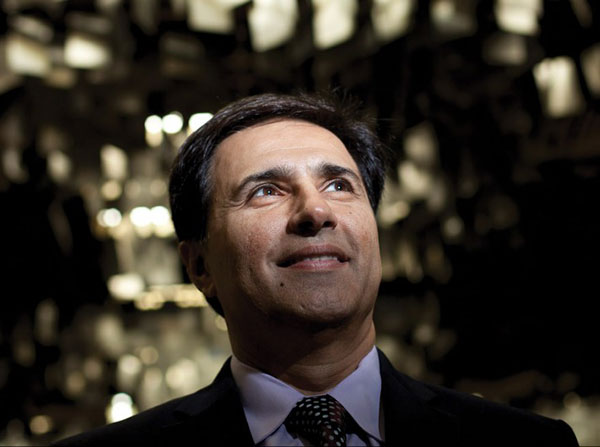
Opthalmologist, engineer and scientist Mark Humayun holds joint appointments at Keck School of Medicine and USC Viterbi School of Engineering. | PHOTO BY ZÉ CARLOS BARRETTA
Mark Humayun received the White House’s National Medal of Technology and Innovation.
Mark Humayun has changed how we see the future—literally. The USC University Professor has earned worldwide acclaim for developing Argus II, the first retinal implant approved by the FDA to restore a semblance of vision to people blinded by retinitis pigmentosa. In recognition, the White House recently named him a recipient of the National Medal of Technology and Innovation.
The award recognizes groundbreaking ideas that have the power to “raise America’s competitiveness and quality of life.” Humayun has done so through an achievement once thought impossible: helping the blind see again.
The Argus II system he helped develop uses an eyeglass-mounted camera to send signals to tiny electrodes implanted in the patient’s eye. The signals travel through the optic nerve to the brain, where they can be interpreted as a picture. Surgeons have implanted the device in dozens of patients blinded by retinitis pigmentosa, a degenerative eye disease, restoring some of their ability to see. One day, Humayun hopes the device can be developed for macular degeneration, a similar and far more common age-related eye disease.
Humayun was named “Innovator of the Year” in 2005 by R&D Magazine and holds more than 100 patents and patent applications, as well as membership in the National Academy of Medicine and National Academy of Engineering.
“These sorts of things can only be accomplished if others join in and help you, and I’ve been very fortunate to have strong collaborators,” says Humayun, who holds joint appointments at the Keck School of Medicine of USC and the USC Viterbi School of Engineering.
by Robert Perkins